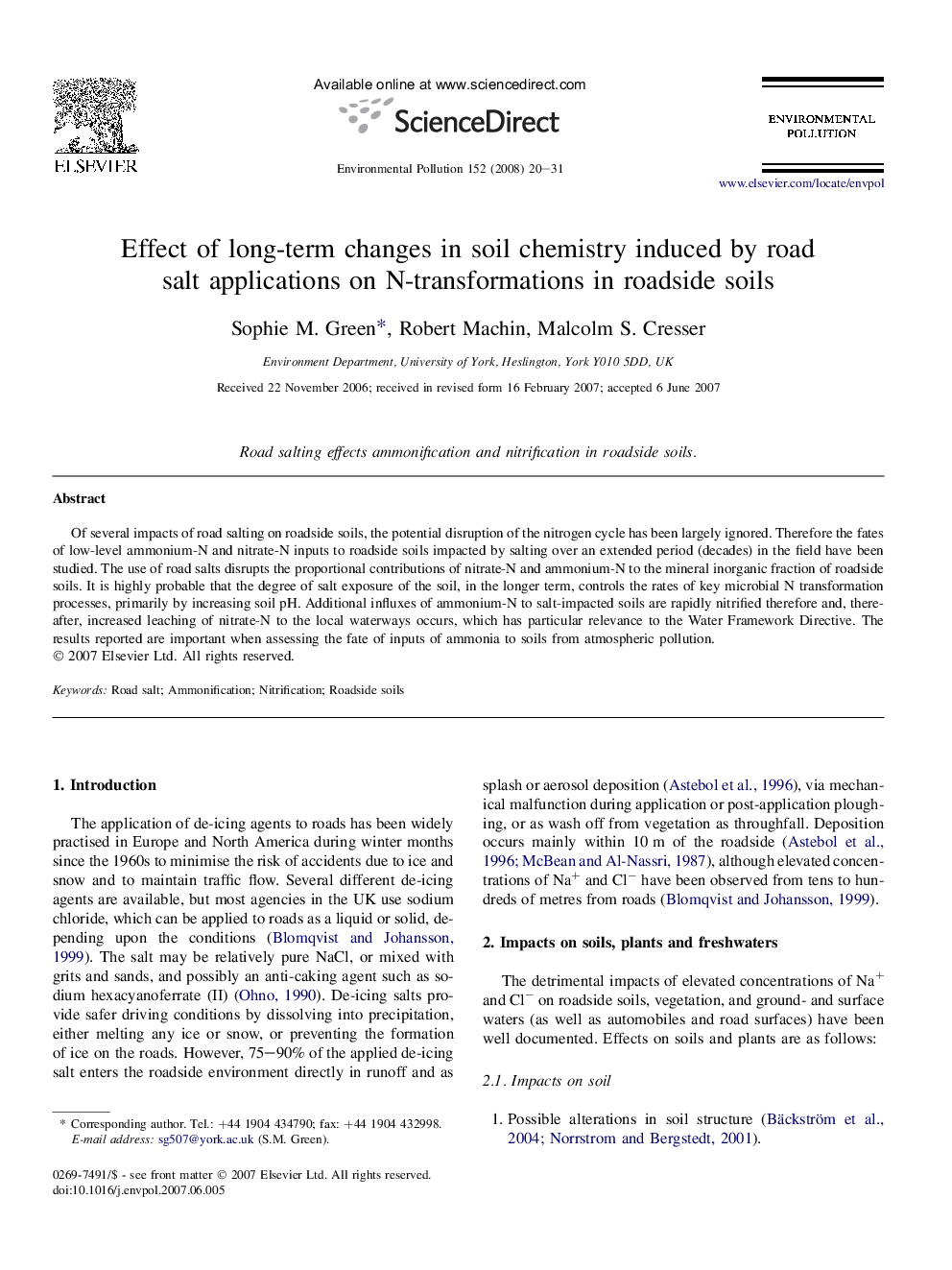| Article ID | Journal | Published Year | Pages | File Type |
|---|---|---|---|---|
| 4426930 | Environmental Pollution | 2008 | 12 Pages |
Of several impacts of road salting on roadside soils, the potential disruption of the nitrogen cycle has been largely ignored. Therefore the fates of low-level ammonium-N and nitrate-N inputs to roadside soils impacted by salting over an extended period (decades) in the field have been studied. The use of road salts disrupts the proportional contributions of nitrate-N and ammonium-N to the mineral inorganic fraction of roadside soils. It is highly probable that the degree of salt exposure of the soil, in the longer term, controls the rates of key microbial N transformation processes, primarily by increasing soil pH. Additional influxes of ammonium-N to salt-impacted soils are rapidly nitrified therefore and, thereafter, increased leaching of nitrate-N to the local waterways occurs, which has particular relevance to the Water Framework Directive. The results reported are important when assessing the fate of inputs of ammonia to soils from atmospheric pollution.
